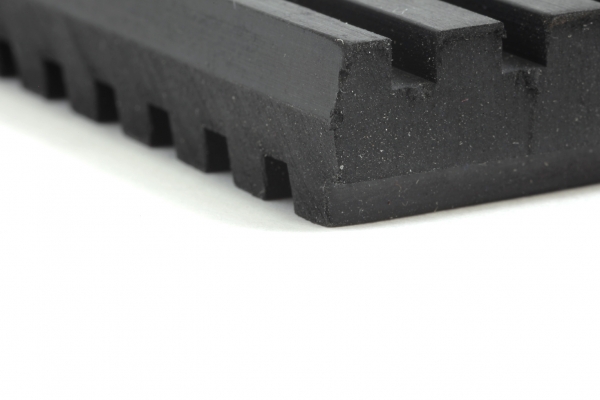
This rubber tile is probably cut from a larger piece of non-slip matting. Its two-directional grooved design increases grip and gives maximum flexibility with no weak points, and without the bulk or weight of a solid piece, which reduces the production cost. The grooves also aid drainage and stop the rubber getting sweaty and slippery. Vulcanised rubber is tough, elastic, waterproof, resistant to solvents and impervious to moderate heat and cold. However, these properties don’t come naturally. Natural or uncured latex rubber is the sap from various types of rubber tree. In this state the rubber is very elastic, but won’t last. Over time it will dry out, crack and crumble as it decomposes.
The process of vulcanisation was discovered in by Charles Goodyear (oddly, no relation to Goodyear tyre manufacturers), and was probably one of the most important industrial discoveries of the age. Liquid rubber has sulphur added to it, then through a combination of heat and pressure, the inner structure of the rubber changes, making it far stronger and more durable. Named ‘vulcanization’ after the Roman god of fire, this hot process allows the long chains of molecules in the rubber to bond together, becoming more like a 3D fishnet structure: geometrically-spaced, strong, resilient and elastic in any direction.
This black tile has some other ingredients added to make it even tougher and abrasion-resistant. Carbon black is used as a pigment and for reinforcement, and is made by burning old tyres, meaning that rubber can be constantly recycled.
Sample ID: 451
Add materials you find interesting to your own selections.
Use the  button to select a material and get started.
button to select a material and get started.

